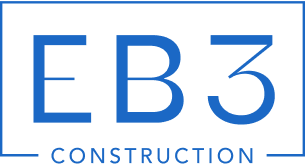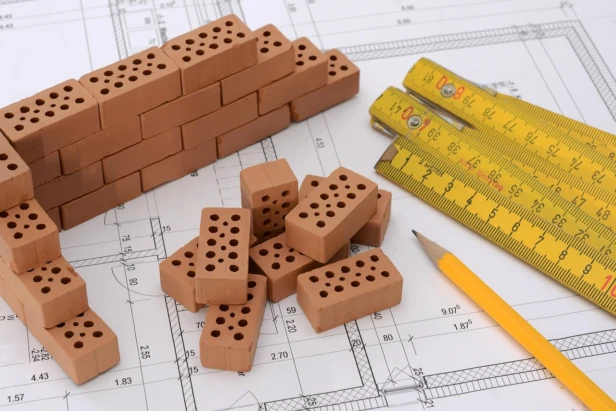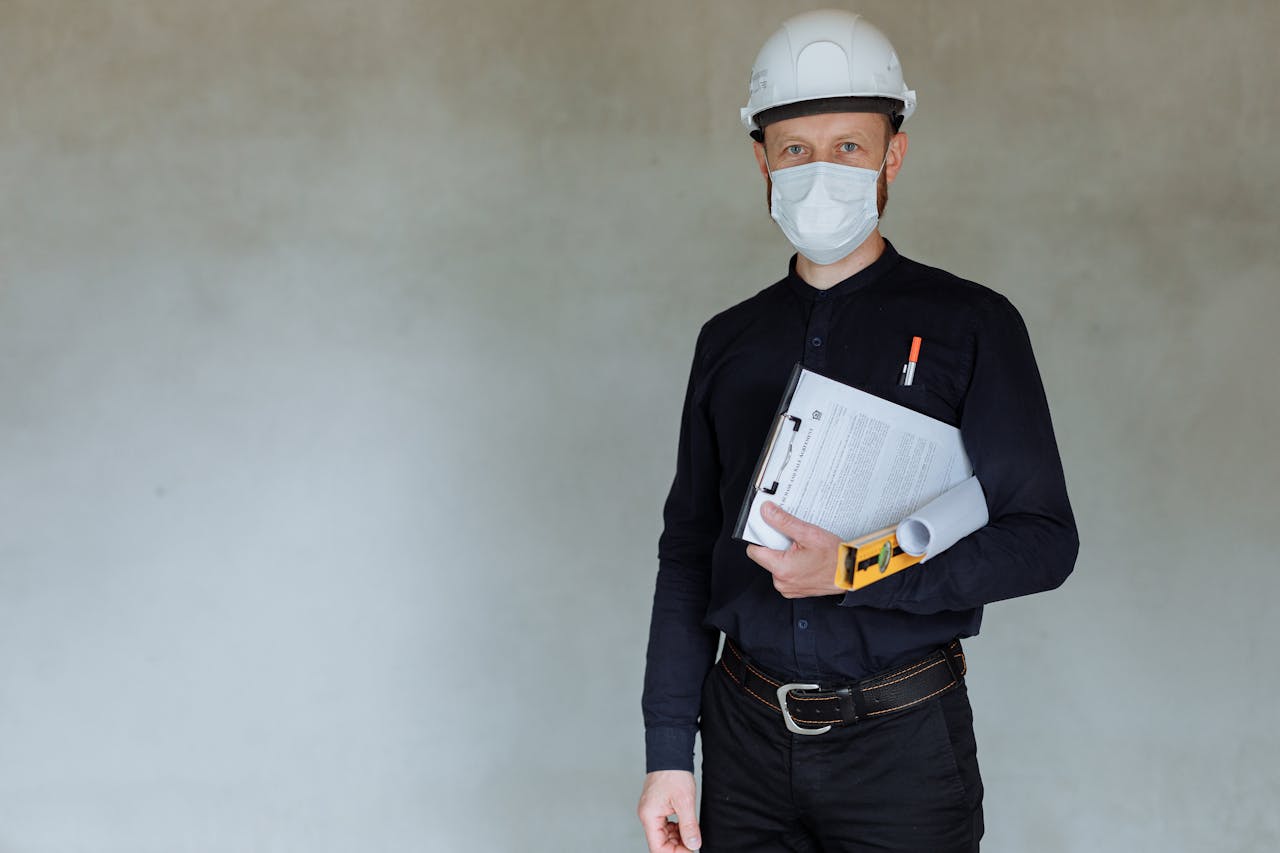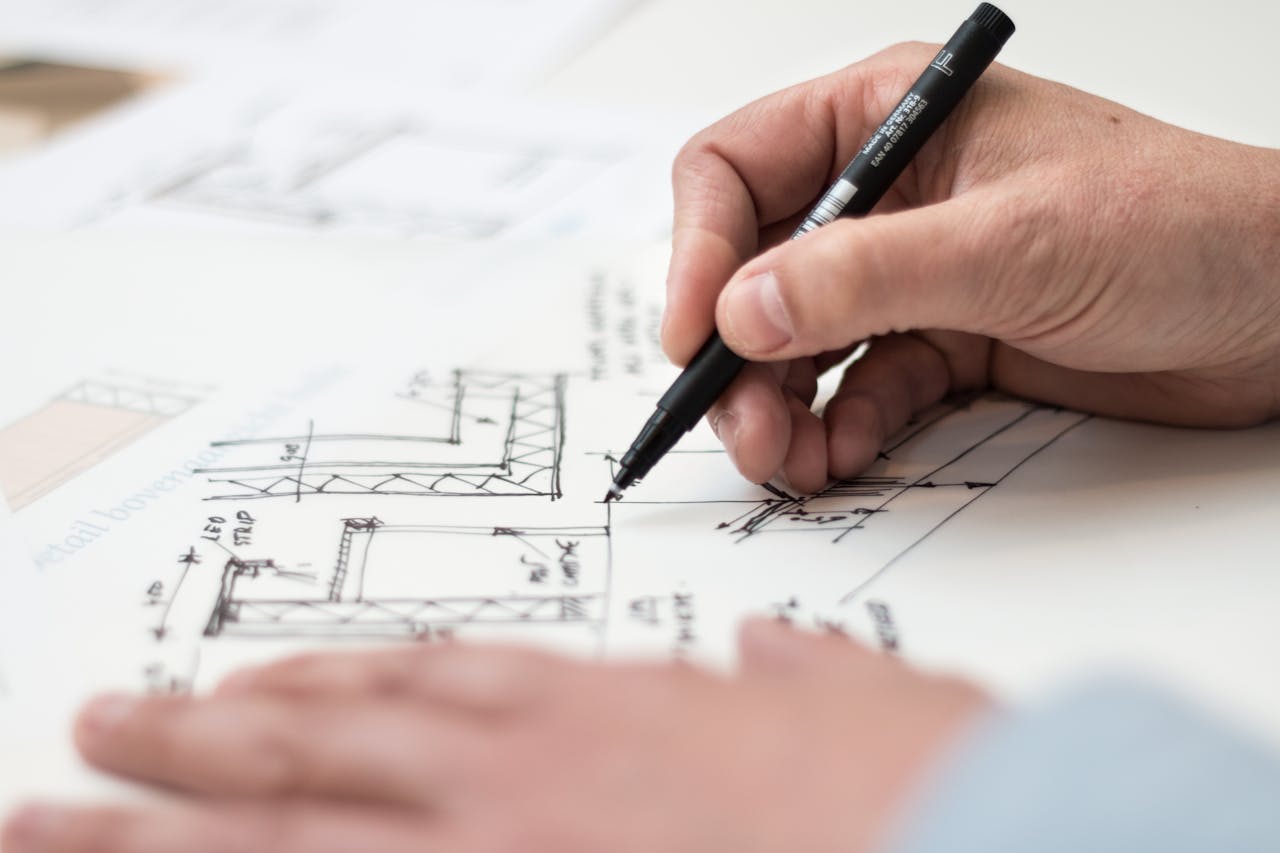Industrial construction design creates facilities specifically for manufacturing, processing, and storage operations. These structures require careful planning to support heavy machinery, specialized utilities, and regulatory compliance that commercial buildings rarely encounter.
Function drives every design decision in industrial projects. We address facility types, structural systems, site logistics, and construction phases to deliver safe, code-compliant operations that meet the unique demands of industrial production and distribution.
Which Industrial Facility Types Shape Design Decisions?
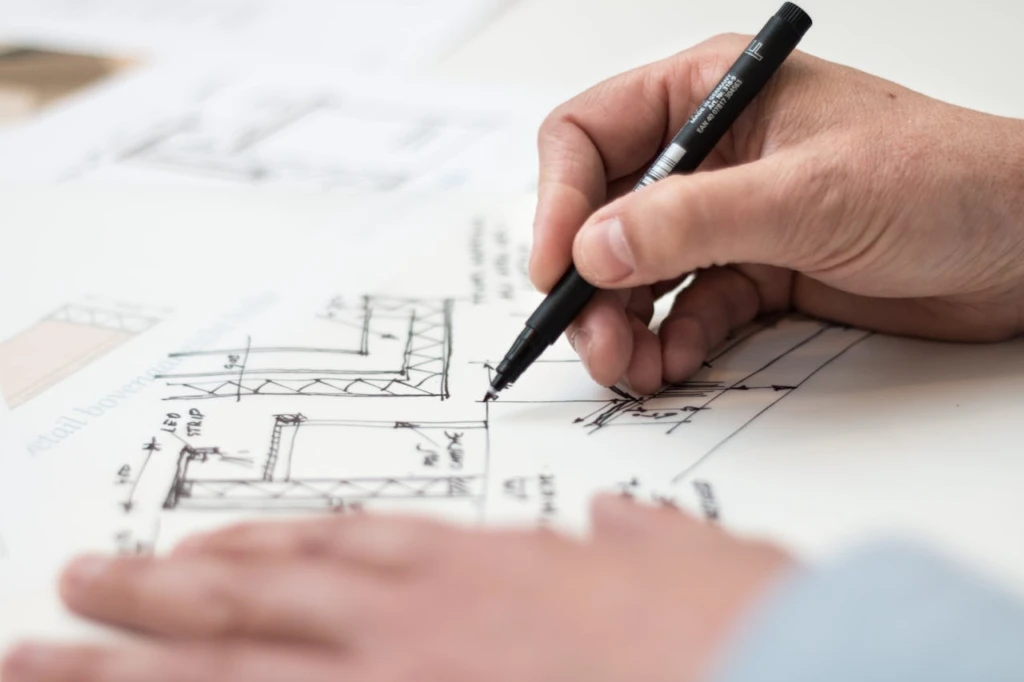
Each industrial facility type brings specific construction requirements that drive our design approach. Manufacturing buildings, storage facilities, and flex spaces create distinct challenges that shape everything from structural systems to utility planning.
Manufacturing Buildings
Heavy manufacturing facilities demand robust construction capable of supporting continuous industrial processes. These buildings require large footprints to accommodate production lines and heavy machinery. We design heavy-duty floor systems that can handle equipment loads, material handling, and constant foot traffic without structural compromise.
Three-phase electrical power is essential for running industrial machinery at full capacity. Most heavy manufacturing operations also need overhead cranes for material handling, which requires engineered structural support throughout the building framework. Pressurized air and water lines serve production equipment, while robust ventilation and exhaust systems manage heat, fumes, and airborne particles.
Light manufacturing facilities focus on assembly operations rather than heavy production. These buildings allow more layout flexibility since equipment is typically lighter and more reconfigurable. We can design spaces with moveable walls and adaptable electrical systems that support changing production needs. The loading dock requirements are usually less intensive, though multiple access points remain important for material flow.
Storage and Distribution Centers
Warehouses and distribution centers prioritize efficient material movement and storage capacity. Single-story construction maximizes usable space while high clear heights up to 60 feet accommodate tall racking systems. We design these facilities with multiple loading docks positioned for optimal truck circulation and minimal congestion.
Large truck courts handle the turning radius requirements of 18-wheelers and provide staging areas for vehicles. Big parking lots support shift workers and administrative staff. Some operations require climate-controlled environments for sensitive products, which affects our HVAC system design and building envelope specifications.
Location drives many design decisions for distribution facilities. Sites near city centers or airports need different traffic flow patterns and security considerations compared to facilities on industrial corridors. We coordinate with NAIOP guidelines to ensure these facilities meet industry standards for logistics operations.
Flex Space Buildings
Flexible industrial buildings combine office areas, production space, and storage within a single structure. This mixed-use approach requires careful zoning of different functions while maintaining operational efficiency. We typically allocate 30% or more of the space for office use, with the remainder split between production and storage areas.
R&D facilities represent a specialized flex space subtype. These buildings need higher electrical capacity for testing equipment and enhanced safety systems for experimental processes. Fire suppression systems must meet stricter standards, and security systems protect intellectual property and sensitive research.
Data centers require the most specialized infrastructure of any flex space type. We design reinforced floor slabs to support heavy server equipment and raised flooring systems for cable management. Cooling and HVAC systems maintain precise temperature and humidity levels. Redundant power systems with backup generators ensure zero downtime, while extensive security protects valuable data assets.
Showroom buildings blend retail display areas with storage and office functions. These facilities need attractive architecture and landscaping to draw customers, while maintaining the functional aspects of industrial operations. Loading areas may be dock-high or ground-level depending on the products being displayed and stored.
Which Structural Systems Work Best For Industrial Construction Design?
Steel frame structures dominate industrial projects because they deliver unmatched strength and adaptability for large, open spaces. We rely on steel framing when projects need clear spans up to 300 feet without interior load-bearing columns, making them ideal for manufacturing plants, warehouses, and distribution centers where equipment mobility and workflow efficiency matter most.
Pre-engineered metal buildings represent the fastest-growing segment in industrial construction. PEMB systems use factory-designed steel components that bolt together on-site, reducing construction schedules by 20 to 50 percent compared to conventional methods. We see PEMBs accounting for roughly 40 to 50 percent of all low-rise commercial buildings in the U.S., according to the Metal Building Manufacturers Association.
Steel Frame Advantages In Open-Span Design
Steel frame structures excel in industrial applications because they support concentrated loads from bridge cranes, heavy machinery, and tall warehouse racking systems. We can design steel frames to handle collateral loads well beyond the 3 to 5 pounds per square foot that standard systems accommodate. Steel’s ductility also provides superior seismic resistance, allowing joints to absorb earthquake energy without catastrophic failure.
The material’s strength-to-weight ratio enables dramatic cantilevers and overhangs without compromising structural integrity. We frequently specify steel framing when projects require large glass expanses for showrooms or administrative areas integrated within industrial facilities.
PEMB Systems For Cost Efficiency
Pre-engineered metal buildings deliver predictable costs and schedules through off-site fabrication in controlled environments. Factory precision reduces material waste to less than 2 percent while ensuring consistent quality across all components. We typically see 16 to 20 week fabrication timelines for PEMB packages, with erection completed in days rather than weeks.
PEMBs handle most industrial requirements effectively, supporting clear heights up to 40 feet and accommodating standard warehouse operations, light manufacturing, and storage facilities. The bolt-together design also simplifies future expansions by adding new bays without disrupting existing operations.
Reinforced Concrete And Masonry Applications
Reinforced concrete structures provide superior fire resistance and durability for facilities processing hazardous materials or requiring extended fire ratings. We specify concrete construction for chemical processing plants, pharmaceutical manufacturing, and facilities where fire performance outweighs cost considerations. Concrete also excels in high-load applications like heavy equipment foundations and underground storage areas.
Masonry systems offer additional fire resistance while providing excellent thermal mass for temperature-sensitive operations. We integrate masonry walls in food processing facilities and cold storage buildings where temperature stability and sanitary surfaces are critical.
Hybrid Structures For Complex Requirements
Hybrid structures combine multiple systems to optimize performance across different building zones. We design hybrid solutions when projects require both open manufacturing areas and multi-story office components, or when crane capacity exceeds standard PEMB limitations. A typical hybrid approach uses PEMB framing for main production areas with structural steel inserts for crane bays and moment frames for seismic resistance.
These systems allow us to balance competing requirements like cost efficiency, structural performance, and architectural flexibility within a single facility. We see hybrid solutions becoming more common as industrial facilities integrate customer-facing showrooms, research laboratories, and administrative functions alongside core manufacturing operations.
What Core Site And Building Features Should Drive Industrial Design?
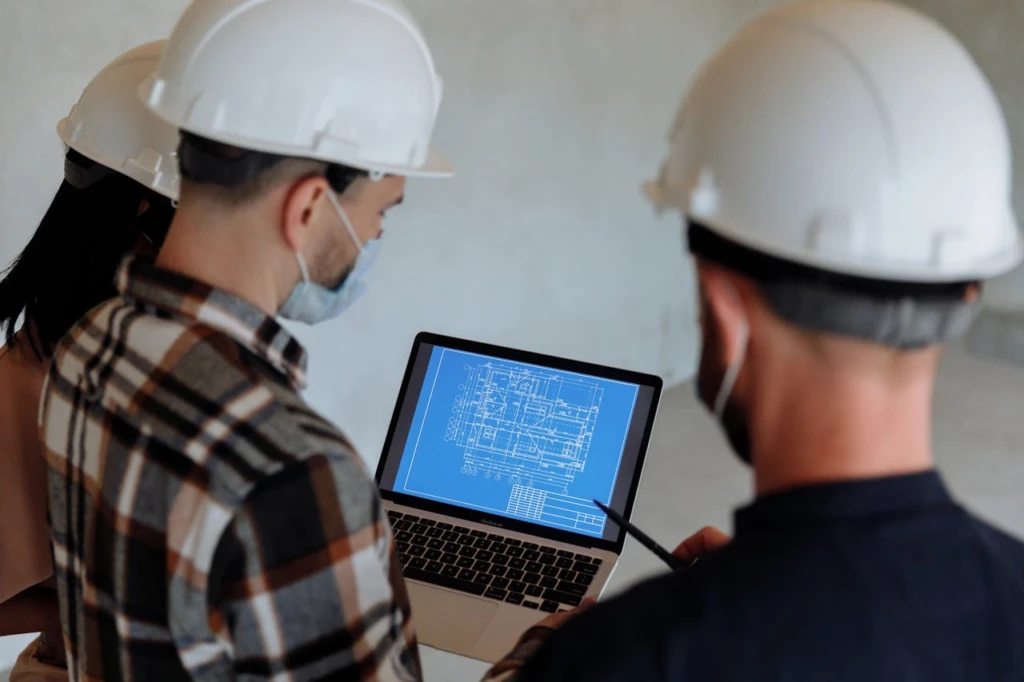
Industrial facilities demand strategic design choices that balance operational efficiency with code compliance. We focus on four critical areas that determine whether a facility can support intended operations and adapt to future needs.
Access And Logistics
Strategic site positioning near major transportation networks drives operational efficiency. We locate facilities within proximity to highways, rail lines, or airports to support 24/7 shipping and receiving operations that many industrial uses require.
Truck circulation patterns require careful planning to accommodate various vehicle types. We design truck courts with adequate depth—typically 120 feet minimum for standard trailers, with 130 feet or more for extended trailers or busy operations. Loading dock configurations must match the facility’s traffic volume and vehicle types, with proper spacing between dock positions to prevent bottlenecks.
Apron space calculation considers the longest expected vehicles and their turning radius requirements. We position loading docks to minimize internal forklift travel distances and separate truck traffic from employee parking areas to enhance safety and operational flow.
Space And Structure
Open floor plans maximize flexibility for equipment placement and material flow. We design facilities with high clear heights—often 32 to 40 feet for modern distribution centers—to enable efficient vertical storage and accommodate automated systems.
Heavy-duty floor slabs support industrial equipment loads, typically designed for 500 to 1,000 pounds per square foot depending on the specific use. We select construction materials and structural systems based on fire performance requirements, with steel framing common for large open spans and concrete used where fire resistance is critical.
Column spacing and structural bay sizes accommodate equipment layouts while maintaining structural efficiency. We coordinate with equipment suppliers early to ensure structural elements don’t conflict with crane systems, conveyor lines, or other specialized machinery.
Utilities And MEP Systems
Three-phase electrical power serves industrial machinery requirements, with service levels ranging from 800 amperage for light manufacturing to 2,000 amperage or more for heavy industrial operations. We coordinate with utility providers early to confirm available capacity and upgrade requirements.
Ventilation systems address both comfort and safety needs. We design robust exhaust systems for manufacturing processes that generate fumes, dust, or heat. Industrial ventilation must comply with OSHA standards and EPA requirements while maintaining energy efficiency.
Pressurized air and water systems support manufacturing processes and fire suppression needs. Climate-controlled storage requires specialized HVAC systems and insulation strategies, particularly for cold storage facilities that demand specialized foundations and vapor barriers to prevent thermal bridging.
Codes And Safety Compliance
Early coordination with permitting authorities prevents costly delays and design changes. We align facility designs with local zoning requirements, building codes, and occupancy classifications from project inception.
OSHA safety standards influence design decisions throughout the facility. We incorporate safety measures for material handling equipment operation, emergency egress paths, and hazardous material storage areas. Fall protection systems and guardrails are integrated into loading dock designs and elevated work areas.
Fire performance requirements drive material selections and compartmentalization strategies. We coordinate sprinkler system layouts with structural elements and ensure adequate fire department access roads and hydrant locations meet local fire marshal requirements.
How Does An Industrial Construction Project Move From Concept To Turnover?
Industrial construction projects follow a structured sequence from initial planning through final handover. We approach each phase with clear objectives and specific deliverables that support the next stage. This systematic progression helps maintain project control and ensures facilities meet operational requirements.
Planning And Design Phase
The planning phase establishes the foundation for successful project execution. We define load-bearing requirements based on equipment specifications and operational needs. Ceiling clearances must accommodate overhead systems, crane movements, and material handling equipment.
Truck bay configurations require careful coordination with site logistics and traffic flow patterns. We design HVAC systems to handle industrial processes, worker comfort, and equipment cooling requirements. Electrical layouts incorporate three-phase power distribution, emergency systems, and specialized equipment connections aligned with OSHA standards from project inception.
Pre-Construction Activities
Material procurement begins once design specifications are finalized. We coordinate with suppliers to ensure delivery schedules align with construction milestones. Site assessments examine soil conditions, groundwater levels, and environmental factors that could impact foundation design or construction methods.
Ground stability testing determines appropriate foundation systems and identifies potential geotechnical challenges. Permit acquisition involves coordination with multiple agencies for building, environmental, and occupancy approvals. We refine structural designs based on site conditions and finalize construction documentation during this phase.
Construction Execution
Safety protocols govern all construction activities, particularly when handling hazardous materials or operating heavy equipment. We implement comprehensive safety management systems that exceed basic regulatory requirements. Daily safety briefings address specific hazards related to current work activities.
Quality control inspections occur at predetermined stages to verify compliance with specifications. We perform structural integrity checks, MEP system testing, and material verification throughout construction. Documentation of all inspections and tests supports commissioning activities and provides owners with comprehensive project records.
Post-Construction And Commissioning
System inspections cover electrical distribution, plumbing networks, air quality systems, and structural components. We test all building systems under operational conditions to identify performance issues before turnover. Foundation inspections verify proper installation and structural integrity.
System commissioning involves functional testing of HVAC, electrical, and specialized equipment to confirm operational readiness. We resolve any deficiencies identified during testing and provide comprehensive documentation of system performance. Final inspections confirm the facility meets all operational requirements and regulatory standards before project completion.
Conclusion And Next Steps

Industrial construction design succeeds when function drives every decision. From manufacturing layouts that accommodate heavy machinery to warehouse logistics that optimize shipping and receiving, each element serves a specific purpose. We coordinate structural systems, MEP infrastructure, and site access to create facilities that support efficient operations while meeting code requirements.
The design process follows a clear progression. Site planning establishes the foundation for logistics and access. Structural selection balances load requirements with construction efficiency. MEP systems deliver the power, ventilation, and utilities that keep operations running. Quality control throughout construction ensures that specifications translate into functional reality. A systematic approach from concept to turnover reduces risks and delivers code-compliant facilities that operate as intended. For your next industrial project, use this framework as a checklist to align your team and establish clear requirements before moving into detailed specifications. Partner with EB3 Construction to turn your industrial construction design into operational reality.
